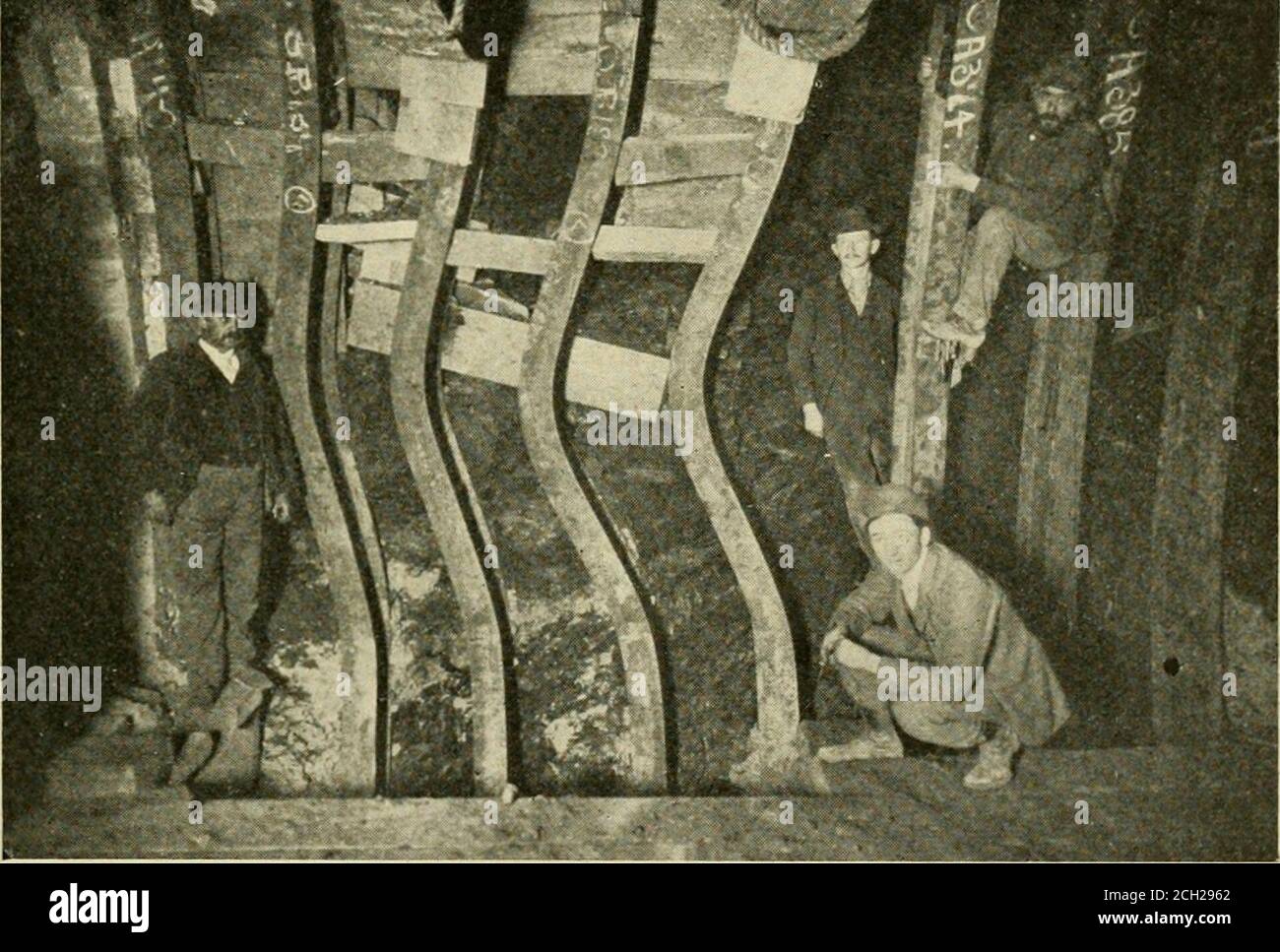. Official proceedings . Southwest Water Tunnel in Chi-cago, likewise built by George W. Jackson Conpany, Inc. Whilethe Blue Island Tunnel was 8 feet inside diameter, the SQithwdstWater Tunnel is horseshoe shape in cross section of Variable di-mensions equivalent at different points to 12, 14 and 16-foot cir-cles. In this instance the lagging ribs were 6 channds. Thisform of interlocking steel ribs, or some similar method of con- Tunnels, Particularly Subaqueous. /I struction, will doubtless reduce very materially the cost of con-crete lining; so also will doubtless the use of the Telescopic

Image details
Contributor:
Reading Room 2020 / Alamy Stock PhotoImage ID:
2CH2962File size:
7.1 MB (453.3 KB Compressed download)Releases:
Model - no | Property - noDo I need a release?Dimensions:
1924 x 1298 px | 32.6 x 22 cm | 12.8 x 8.7 inches | 150dpiMore information:
This image is a public domain image, which means either that copyright has expired in the image or the copyright holder has waived their copyright. Alamy charges you a fee for access to the high resolution copy of the image.
This image could have imperfections as it’s either historical or reportage.
. Official proceedings . Southwest Water Tunnel in Chi-cago, likewise built by George W. Jackson Conpany, Inc. Whilethe Blue Island Tunnel was 8 feet inside diameter, the SQithwdstWater Tunnel is horseshoe shape in cross section of Variable di-mensions equivalent at different points to 12, 14 and 16-foot cir-cles. In this instance the lagging ribs were 6 channds. Thisform of interlocking steel ribs, or some similar method of con- Tunnels, Particularly Subaqueous. /I struction, will doubtless reduce very materially the cost of con-crete lining; so also will doubtless the use of the Telescopic Col-lapsible Steel Form and Traveler, manufactured by the RansomeConcrete Machinery Company, and described in the October 2, 1909, issue of the Engineering Record. Reinforced concrete commends itself for rock tunnel lining.Whether or not it will eventually replace brick for such purposeswill depend on its performance in recent installations. Whatform the reinforcement will take will depend largely on circum- ^■•■¥. Figure 3. stances, but the reinforcement should always be designed to in-crease materially the strength of the concrete and be in such formas to perform the most service for the least weight. In the con-struction of the Aspen Tunnel, of the Union Pacific Railroad, inWyoming, unexpected difficulties were encountered. A doubletrack tunnel was driven by the ordinary American method oftaking out and timbering the top third of the excavation and thebenches were removed by the use of the steam shovel. The ma-terial through which the tunnel penetrated was exceedingly un-stable, being a disintegrated soft shale rock. Here slips were 72 Proceedings Railway Club of Pittsburgh. frequent and heavy timbering was used to overcome the ten-dency of the whole mountain to slide into the excavation. Whenheavy timbers proved too light, 12 31.5 lb. beams bent to thecurve of the tunnel and erected in three sections spliced togetherwere tried. These also proved too light for the work